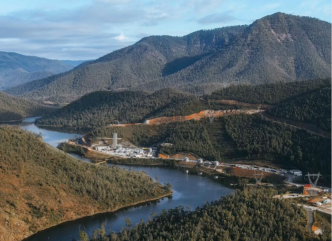
Snowy Hydro has confirmed plans to bring in a fourth tunnel boring machine (TBM) to ensure the Snowy 2.0 project remains on track for its target completion date of December 2028. This decision follows new ground testing that revealed the fault zone on the 17kmtunnel route is more challenging than initially believed. The move is pending approval from the NSW Department of Planning, Housing, and Infrastructure.
Dennis Barnes, CEO of Snowy Hydro, stated that the additional TBM is necessary due to the recent findings and the need to refine the tunnel’s design. “We’ve always known the fault zone was there, and I’ve said in the past we will need to take action,” Barnes said. “Further ground testing since the project reset has revealed it is far more geologically challenging than earlier investigations indicated.”
A modification request has been submitted to the NSW Department to approve the changes to the construction methods within the already sanctioned work zone. Snowy Hydro has emphasized that the modifications will not increase land clearing or impact surface and groundwater. Local communities will be consulted regarding these changes.
“We’re mindful that we are building Snowy 2.0 in a precious and protected national park,” Barnes said. “We have worked diligently to arrive at a proposal that does not step outside our existing construction area or increase our already approved impacts.”
The decision to bring in a fourth TBM also comes in response to the disappointing performance of Florence, the TBM currently working on the same tunnel. Barnes acknowledged this, noting: “It’s difficult to say with certainty whether the same action would be needed if Florence had performed as we had hoped. However, it’s likely that the fourth machine would still be needed.”
Snowy 2.0 is a key project in Australia’s transition to renewable energy, designed to generate enough power to supply 3 million homes continuously for a week. According to the Australian Energy Market Operator (AEMO), Snowy 2.0 will fulfill the majority of the National Electricity Market’s storage needs.
“Snowy 2.0 is critical to Australia’s energy future. We need to get this job done,” Barnes emphasized.
If approved, the fourth TBM is expected to begin operations before the end of 2025.






